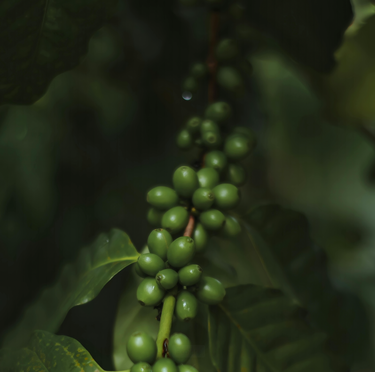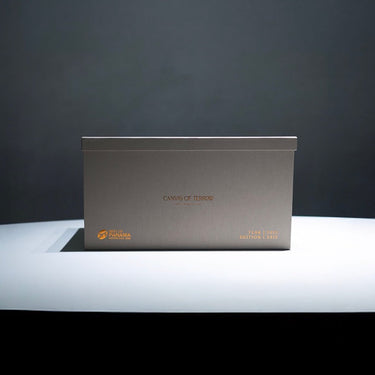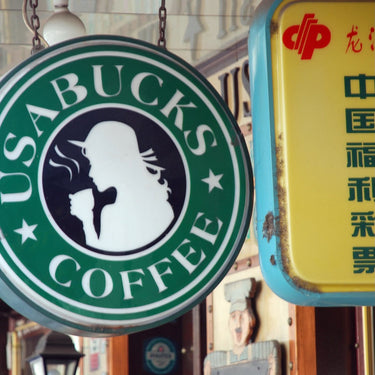Caffeine is a stimulant - it can make us feel brighter, more awake, and more productive. But like most good things, there can be such a thing as too much. Most of us have felt that caffeine buzz when we’re trying to sleep, the nervous energy, and the inevitable crash that follows! So why don’t more people opt for decaf.
We’ve all too often witnessed the turning up of noses, the cries of ‘What’s the point?!’, and the general assumption that decaf = an inferior product. Here we are going to explore the ins and outs of the decaffeination process, dispel the myths, and investigate the impact not just in our cup, but on the planet too.
The Basics
Caffeine starts its life as a compound that naturally occurs during the ripening process of coffee cherries. The caffeine acts as the plant’s natural defence mechanism against small insects, which can destroy or degrade the cherry quality. What gives us humans that classic coffee buzz, is enough to deter the hardiest of pests!
Caffeine’s molecular structure is one that breaks down on contact with other compounds. This is why caffeine is soluble, and why it therefore ends up in your cup - and not in the compost with the rest of the coffee grounds.
The Decaffeination Process
All decaffeination methods use caffeine solubility as the key to the extraction process… Coffee is decaffeinated once the seeds of the coffee cherries have been picked, processed and dried, but before the coffee is roasted.
DID YOU KNOW?
In 1903 a German coffee merchant, Ludwig Roselius, happened upon decaffeination by accident when a shipment of coffee was water damaged.
FUN FACT: The caffeine removed is then collected in the form of powder and compacted into chalk like sticks. It is used in the pharmaceutical industry (flu tablets) Food industry (Cola, Energy drinks) or sold in powder form.
SWISS WATER PROCESS
The Swiss Water process is currently the only method to boast a zero chemical approach. The Swiss Water company uses a clever combination of water and a caffeine deprived coffee extract (GCE), together with temperature control and osmosis to draw out the caffeine from the green coffee beans, whilst leaving behind all the other delicious compounds!
The making of Flavour Charged Water (GCE)
- Green coffee beans are immersed in pure water
- This water extracts both coffee flavour, solids & caffeine
- The beans are discarded and caffeine removed (using a carbon filter), leaving coffee flavour charged water.
CHEMICAL FREE DECAFFEINATION
- The beans are soaked in water to prepare for decaffeination
- The beans are then dropped into the flavour charged water. Initially this water is caffeine free allowing the caffeine to diffuse from the beans to the water. Since the concentration of the flavour components in the bean and the water are equal only the caffeine is removed leaving the flavour intact
- The water than passed through the carbon filter that traps the caffeine. The now caffeine free, flavour charged water recycled to start the process. This action is repeated for around 8 hours, until the beans are 99.9% caffeine free.
C02 METHOD
This process uses steam to open the pores of the green coffee, making it even more soluble. Then pressurized liquid CO2, a naturally occurring compound, is combined with the steamed green beans and the caffeine bonds with the CO2. As the solution is depressurized, and the CO2 evaporates, the pure caffeine is captured and removed. This method is praised for the flavour retention within the coffee, making it harder to tell these apart from your caffeinated versions.
- Green coffee is treated with steam to make it permeable to facilitate the extraction of caffeine by liquid CO2.
- The beans are contacted with liquid C02 under subcritical conditions*
What is Subcritical C02?
It is a state in which liquid CO2 has the physico-chemical properties of gas. CO2 has high selectivity for caffeine and preserves the other components of green coffee.
- The C02 transitions from the liquid phase to the gas phase making it possible to extract caffeine.
- 4) the beans are dried until a 1%-12% moisture content is obtained.
SUGARCANE METHOD
This relatively new term in the decaffeination world describes another water solution method - this time with a little help from fermented sugarcane!
This process also begins by steaming the green coffee beans to open the pores and give the water better access to the caffeine particles inside. Next, the beans are introduced to a water solution with a compound derived from the fermented sugarcane, which is also locally grown. This compound bonds to the caffeine and the solution is drained, this stage is repeated until all (over 95%) of the caffeine is removed.
We think this is the best approach for flavour retention, as the sugarcane compound acts efficiently and selectively. From a sustainability standpoint, the coffee is grown, processed, and decaffeinated at origin using locally sourced ingredients, so big ticks all round.
- The green coffee beans are steamed for 30 minutes prior to decaffeination. The low pressure steaming process has now opened the pores of the coffee allowing for extraction.
- The beans are then placed in a solution of water and Ethyl Acetate (E.A), a naturally occurring compound derived through the fermentation of sugarcane.
- Green coffee is submerged in the solution, which naturally bonds to the salts of chlorogenic acids within the coffee allowing for extraction of caffeine.
- Once the coffee is saturated, the tank is drained and fresh solution is introduced. This continues for about 8 hours.
- The final low-pressure steaming removes the remaining traces of Ethyl Acetate (E.A).
- The decaffeinated coffee is then dried, physically polished to ensure cleanliness, and packaged for export.
SUMMARY
Ultimately, one of the biggest factors at play in decaf’s poor reputation, is that people don’t necessarily want to pay more for their cup of coffee. And as you have seen, the process is elaborate and ultimately costly! If you are a high skilled coffee farmer, producing exceptional beans, it is unlikely that your coffee will end up being decaffeinated.
Therefore, it is very common for poorer quality coffee to end up being decaffeinated in the first place and thus perpetuates this negative cycle. It was a no brainer, therefore, for us at RAVE to source an incredible coffee send this for decaffeination ourselves and be able to directly compare it to the caffeinated version. And now so can you!
By increasing our purchasing from this association, we can guarantee more of the producers a guaranteed price for more of their coffee and offer a truly sustainable business model for us both.
If you’ve been deterred by decaf’s poor reputation we would encourage you to give it another go, after all, who doesn’t want to drink more coffee for more of the day!
GO AHEAD GIVE IT A TRY AND LET US KNOW WHAT YOU THINK






